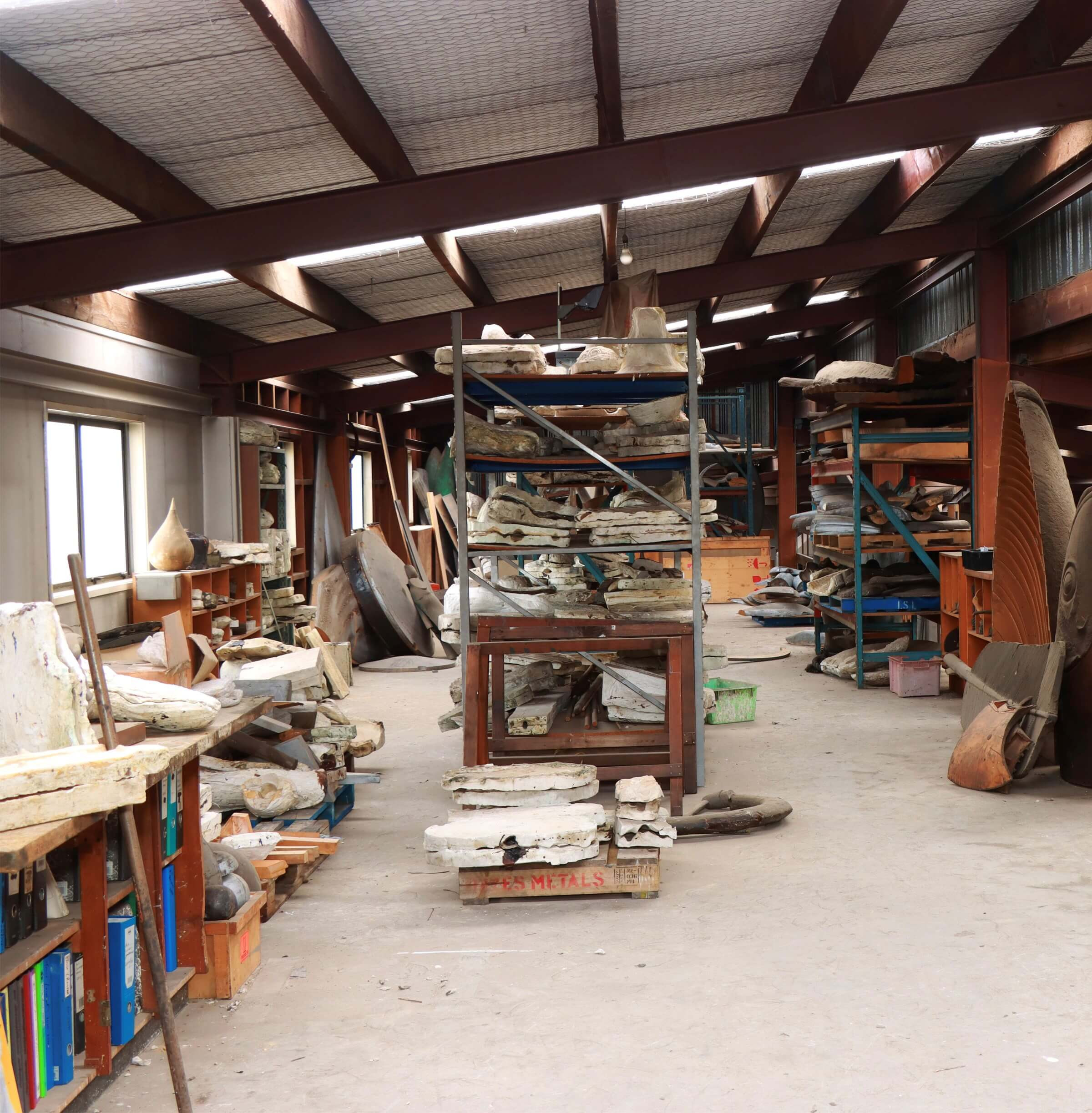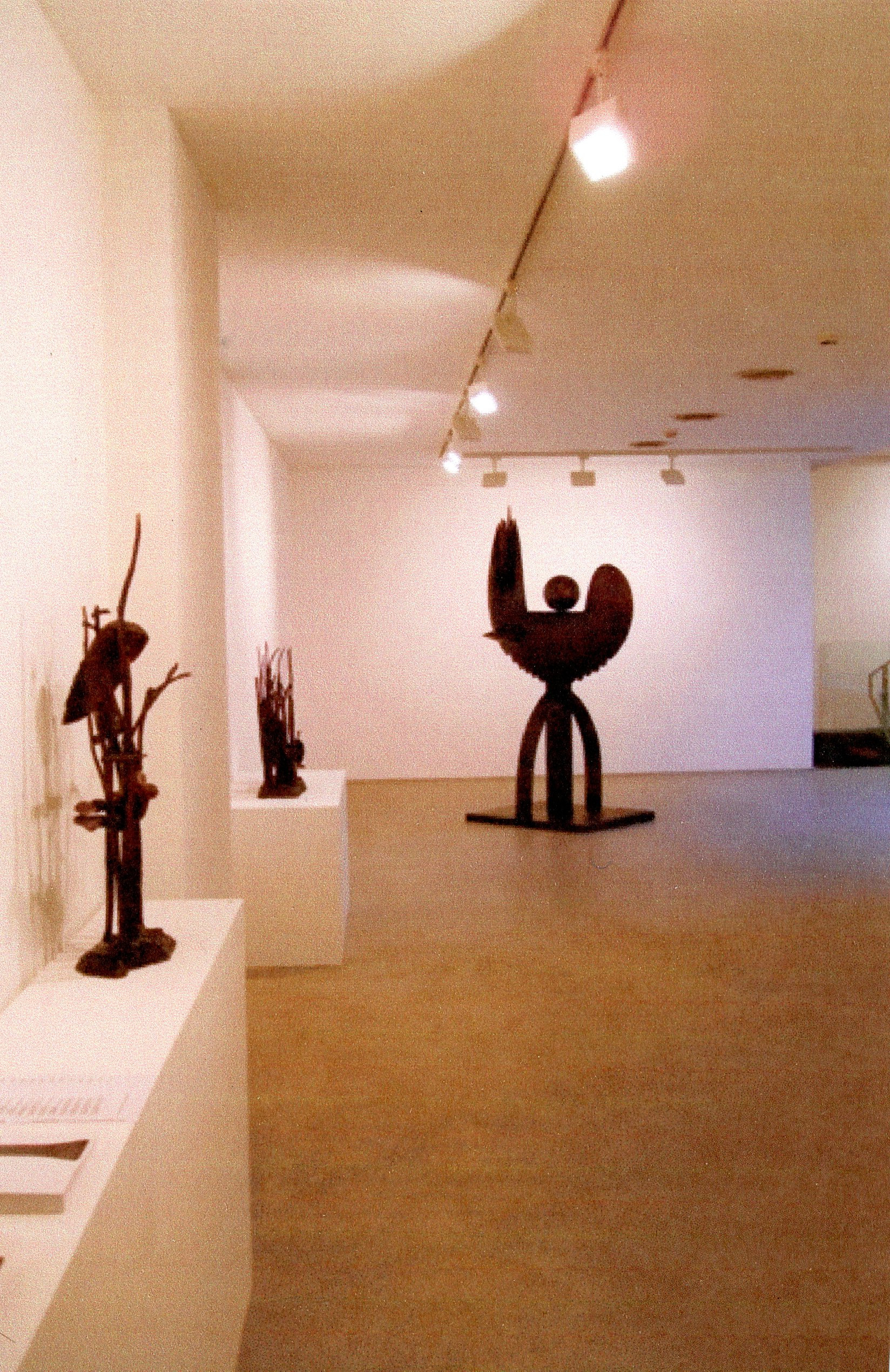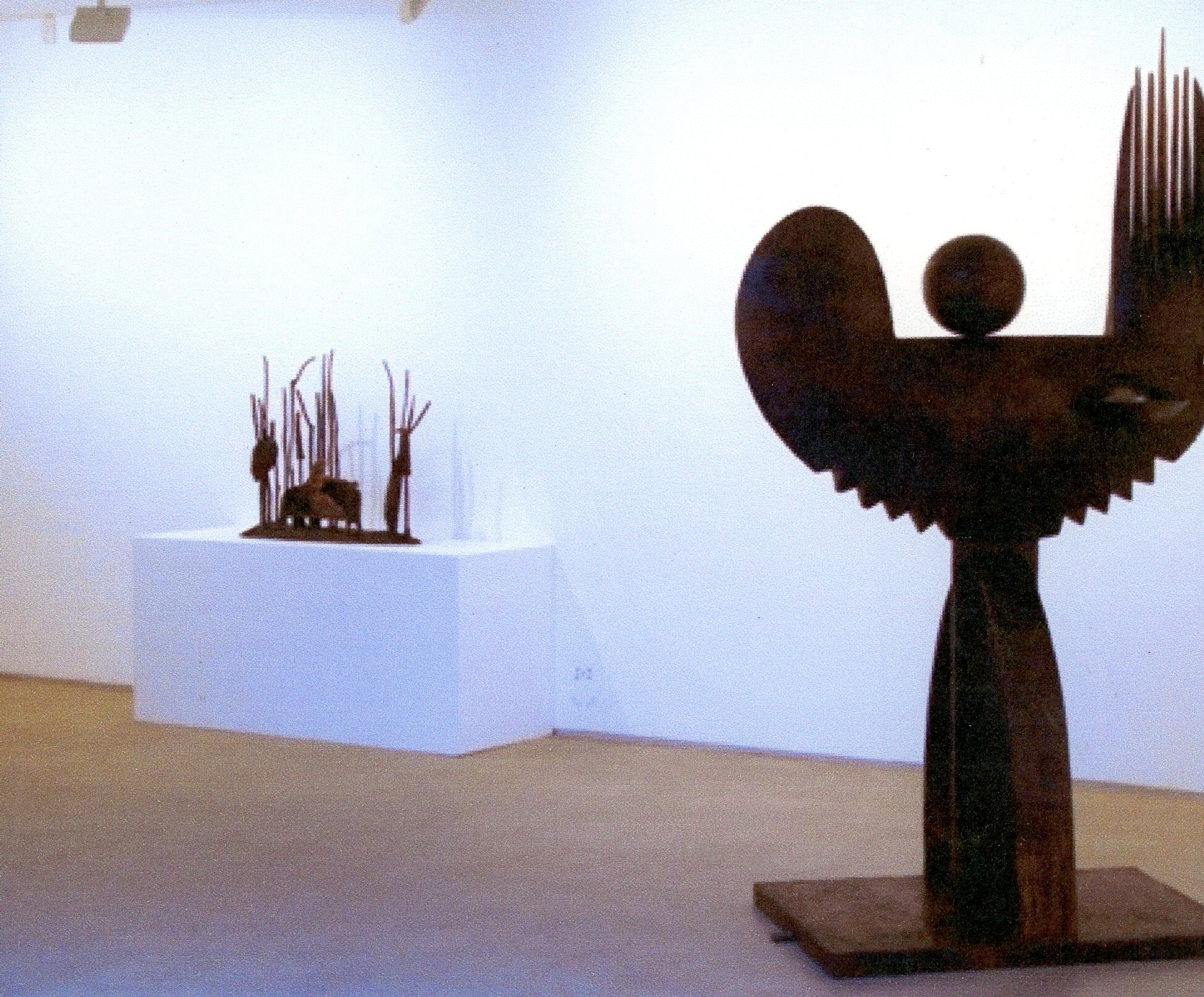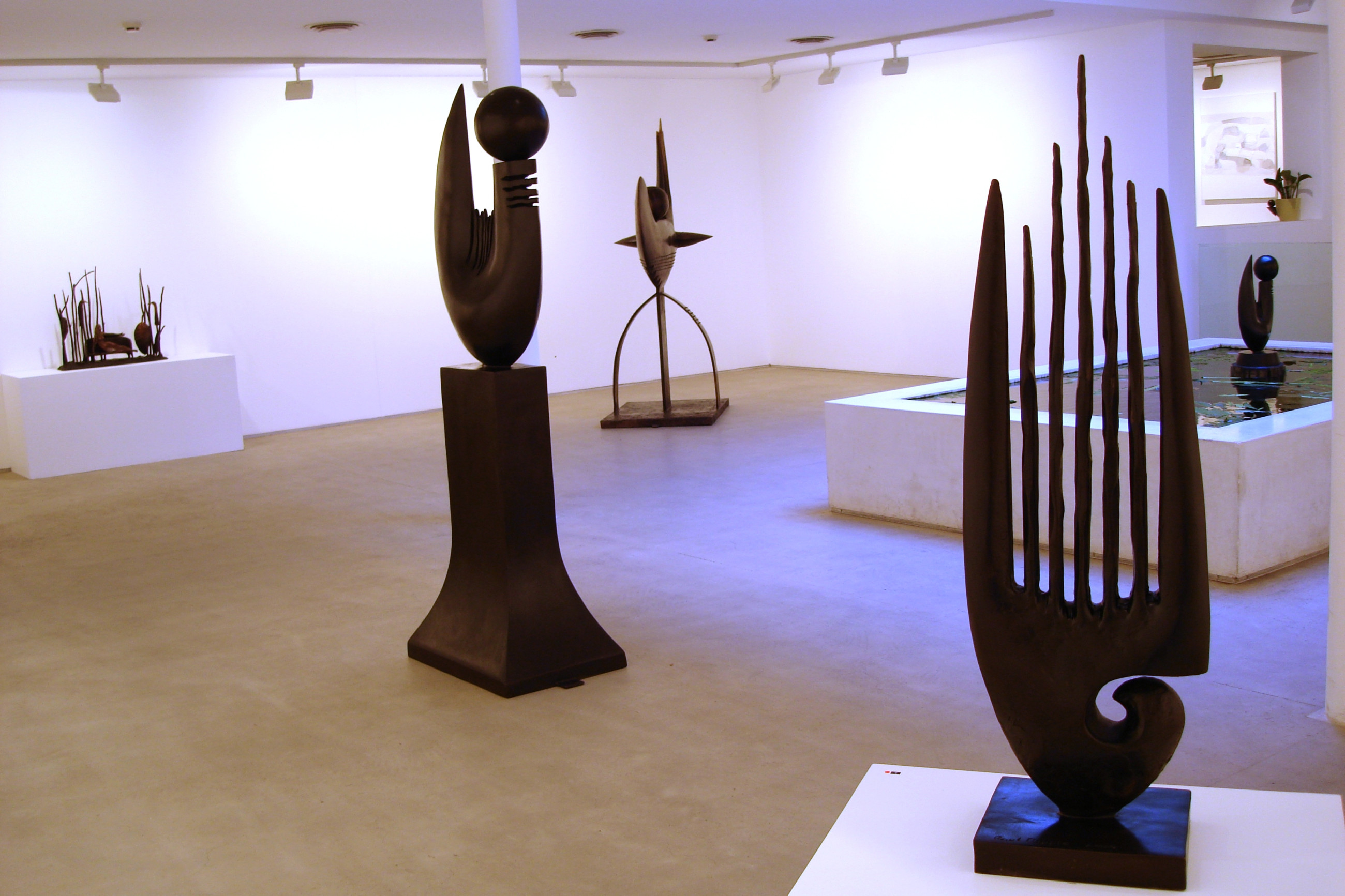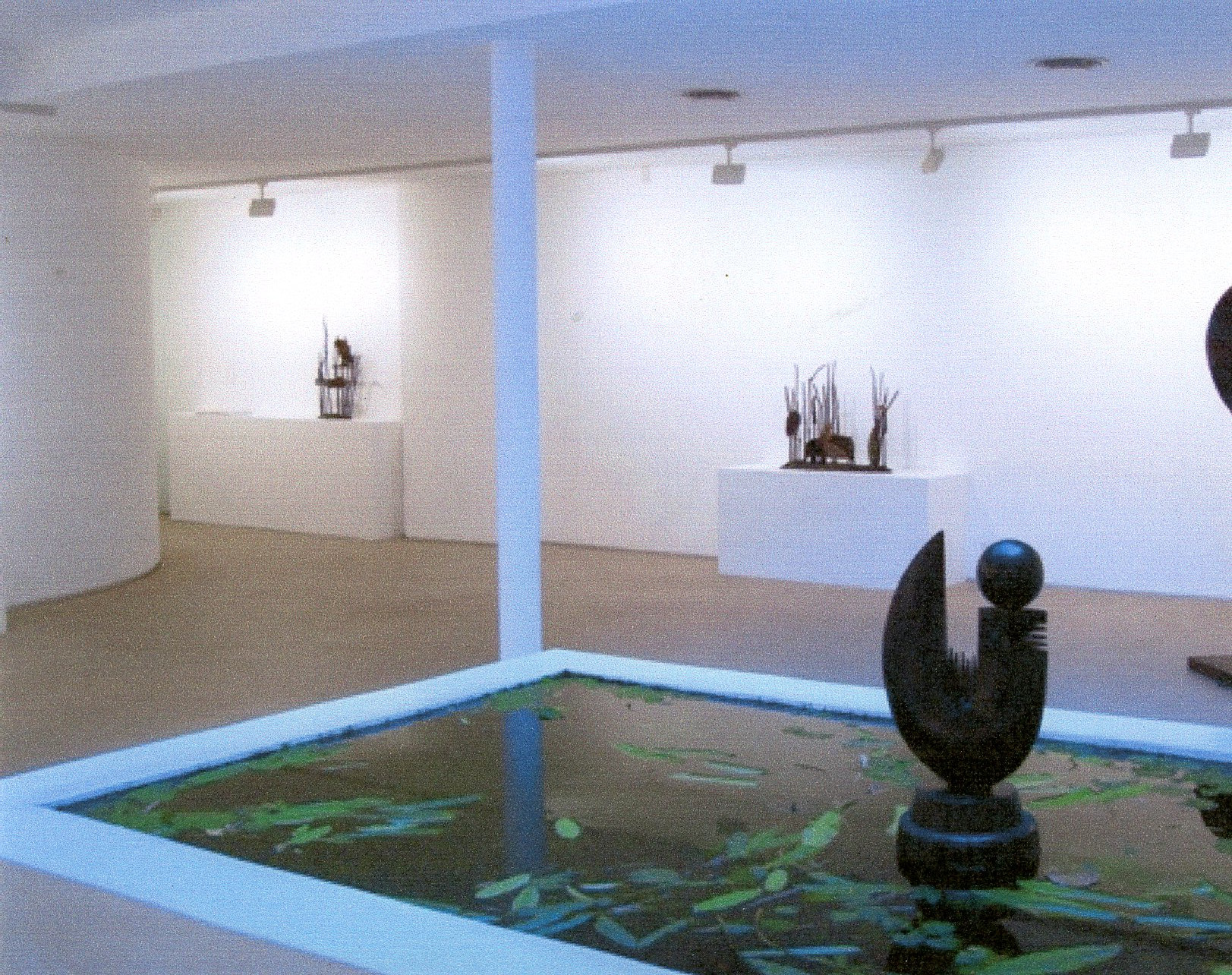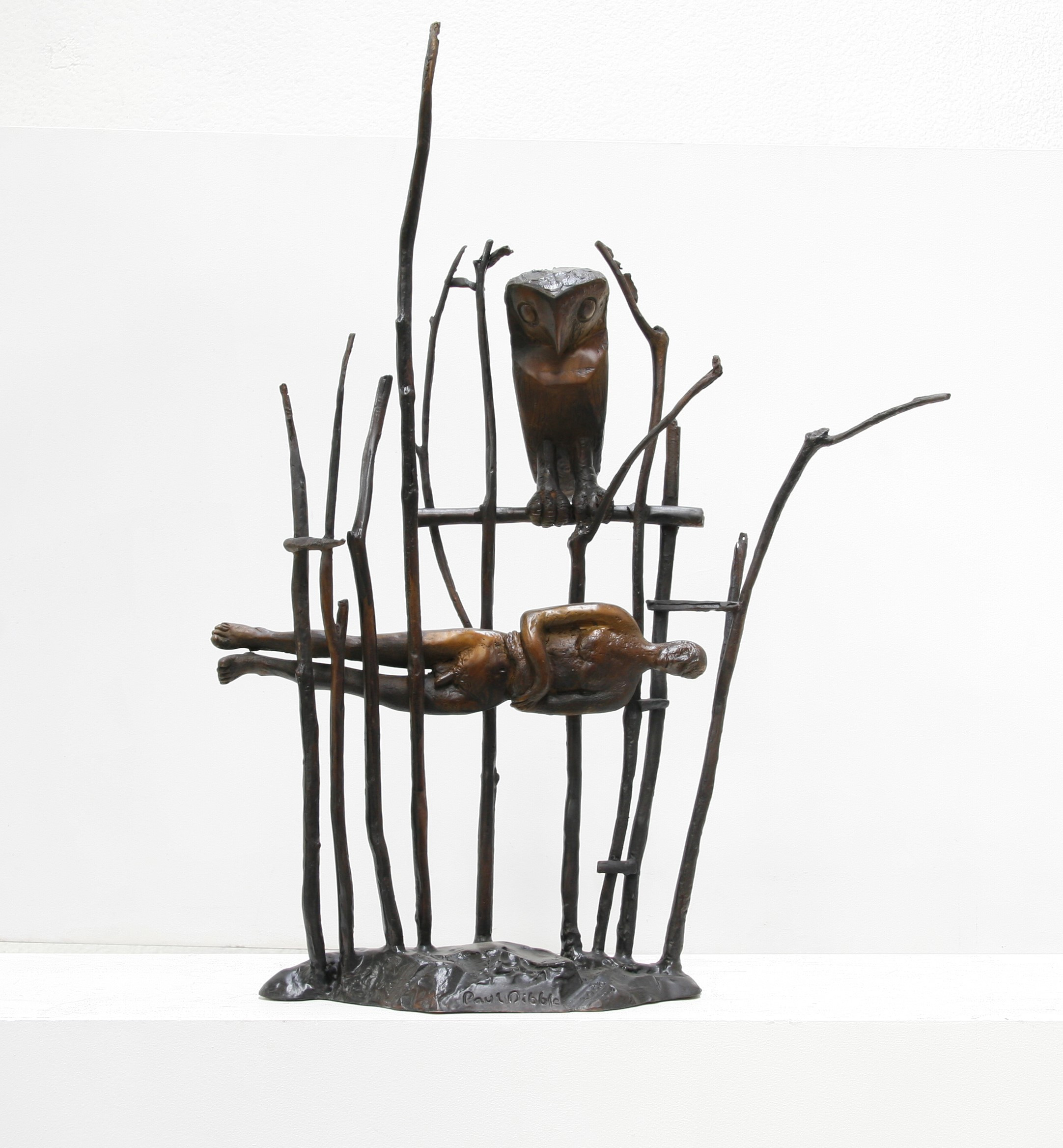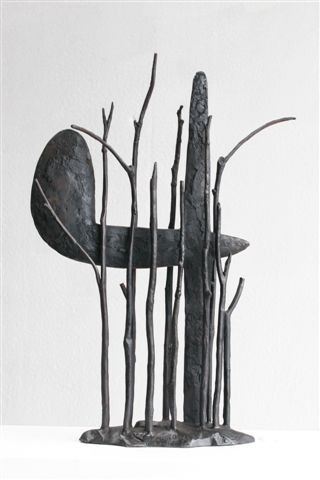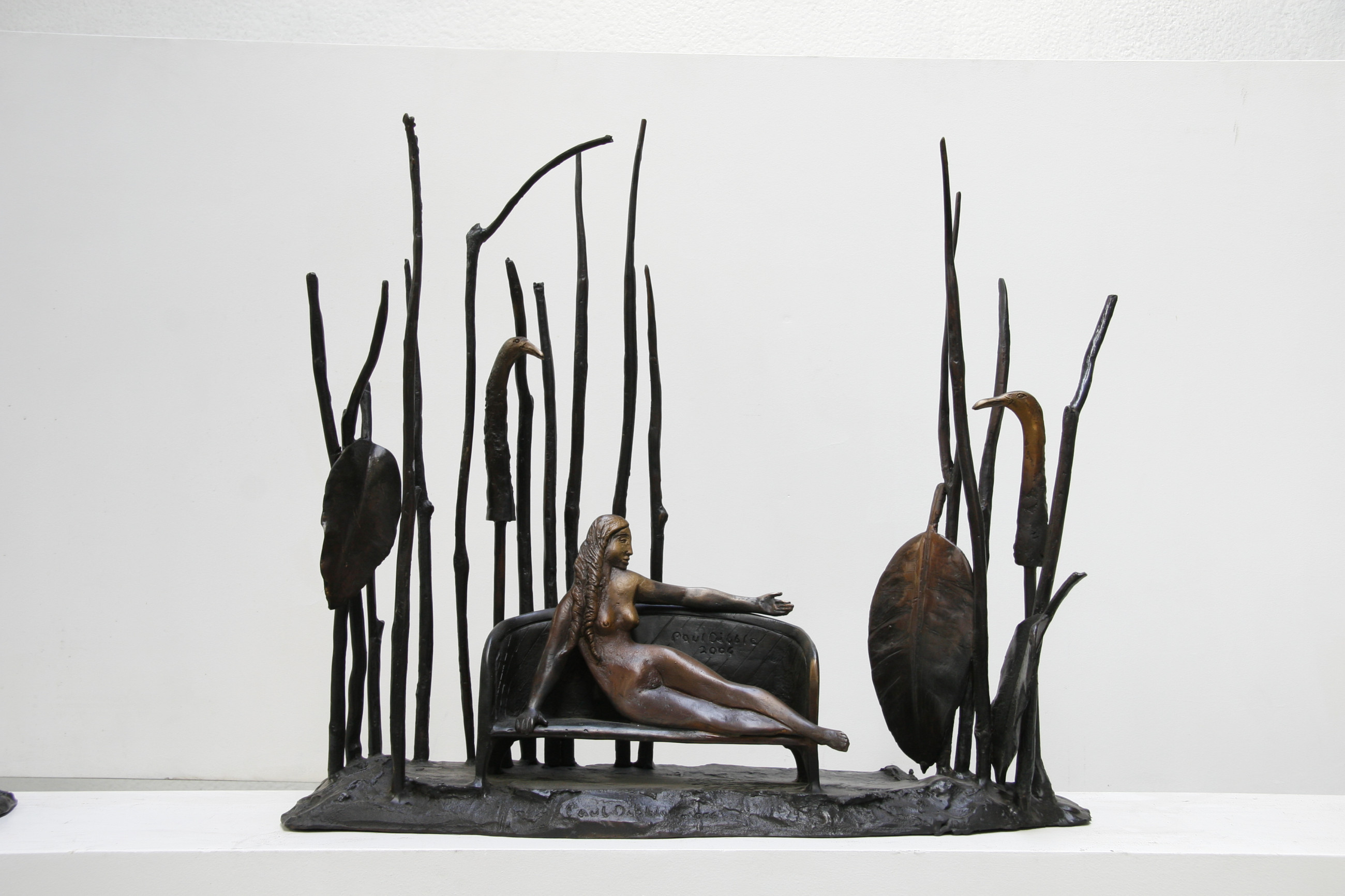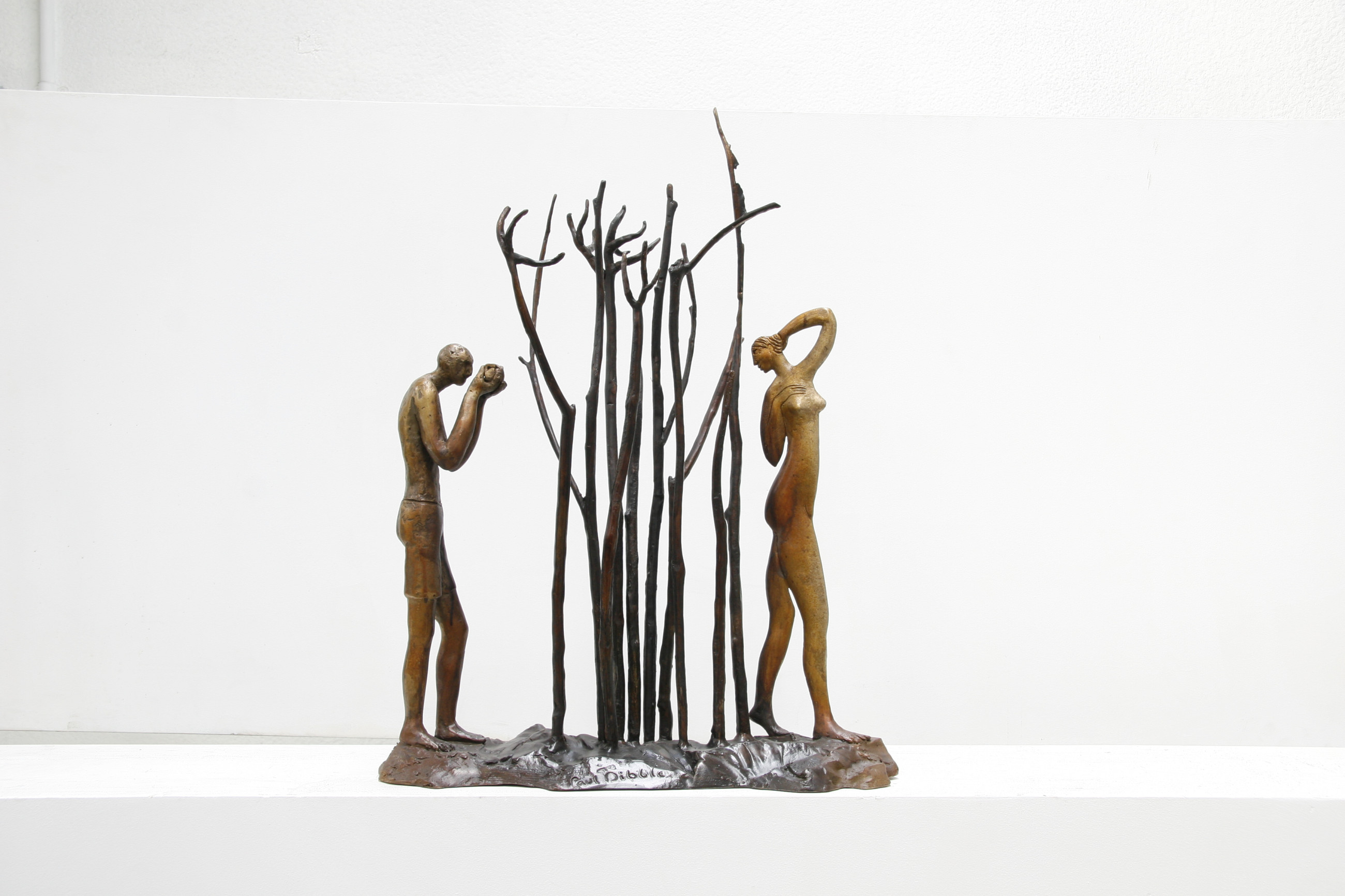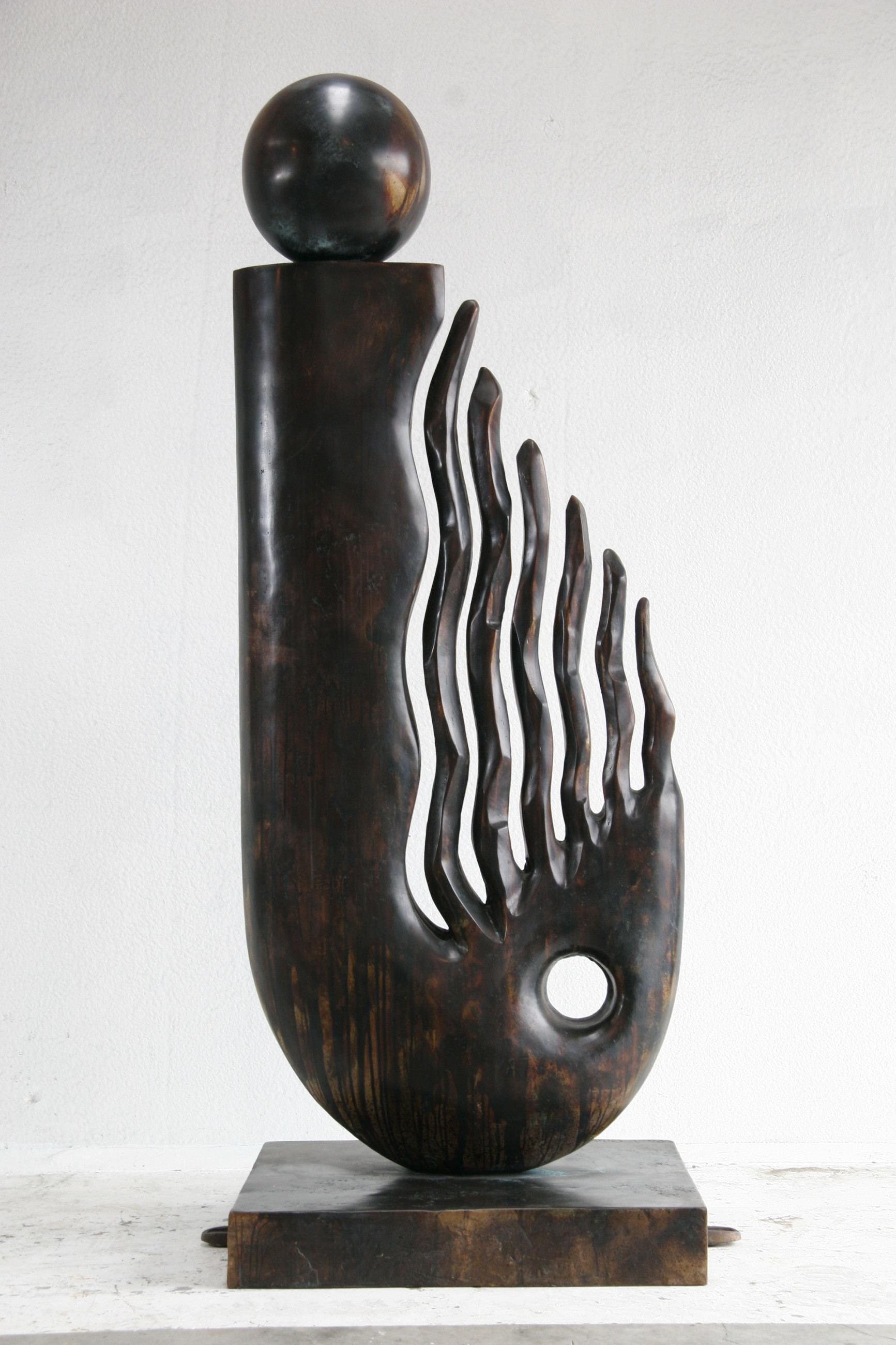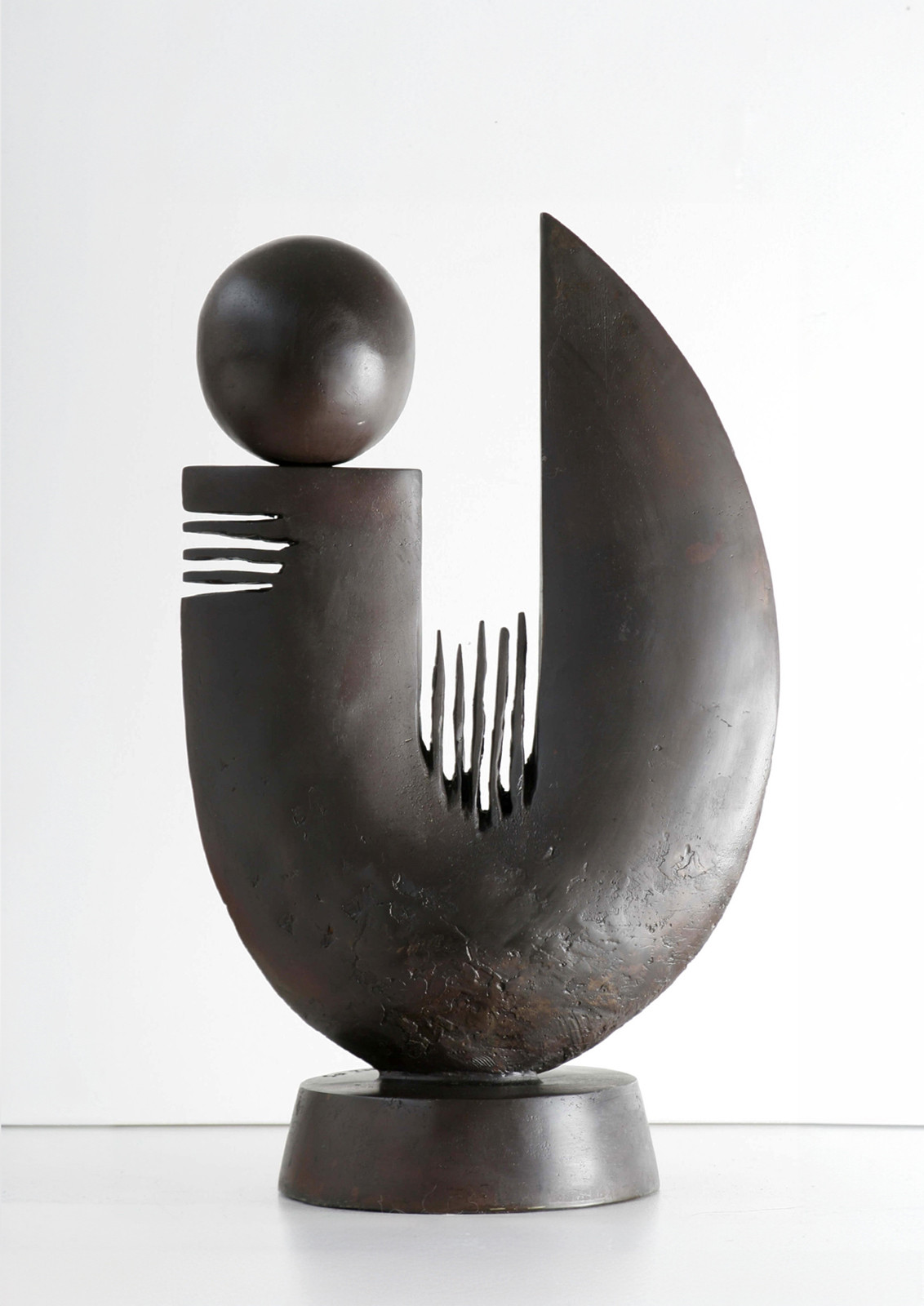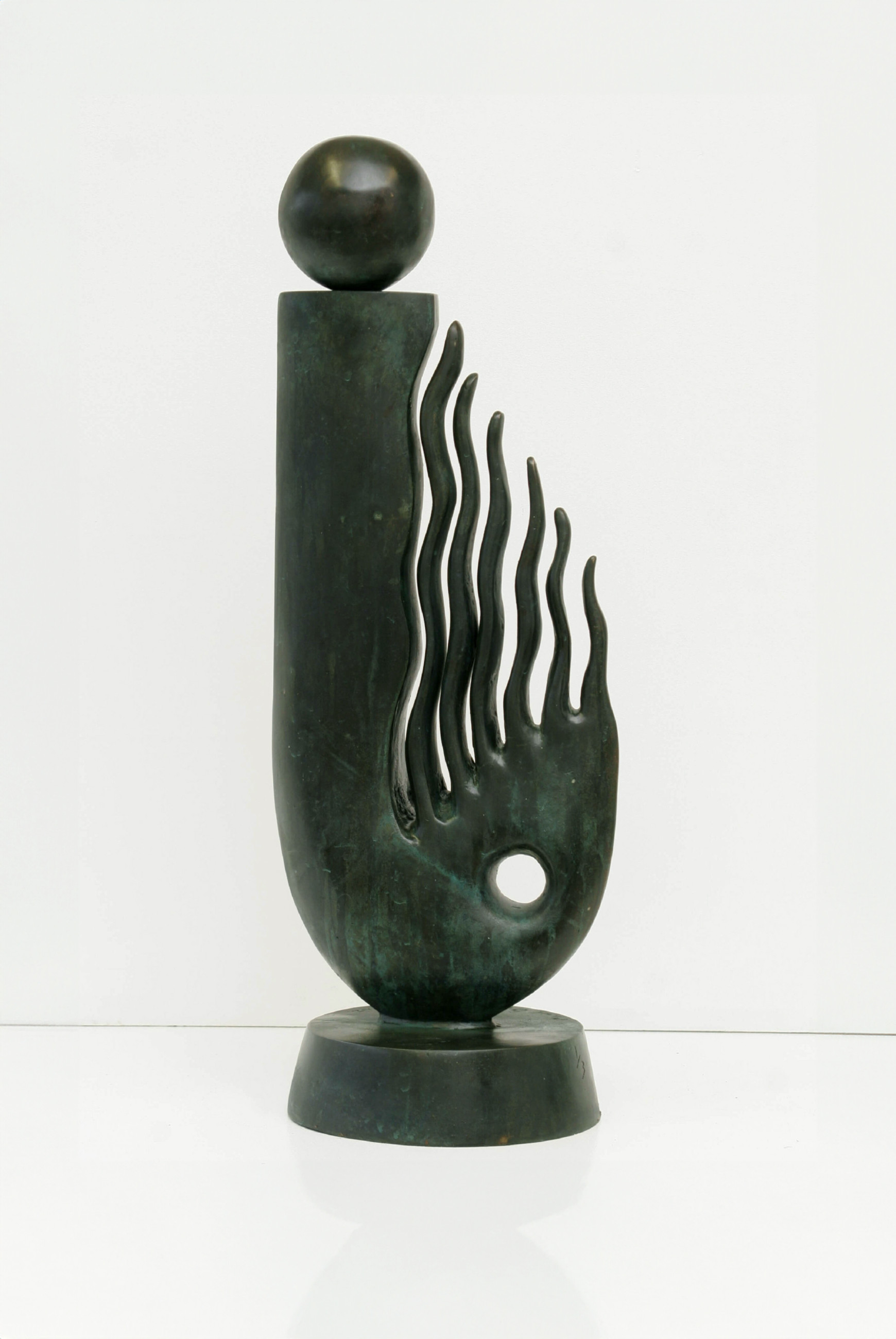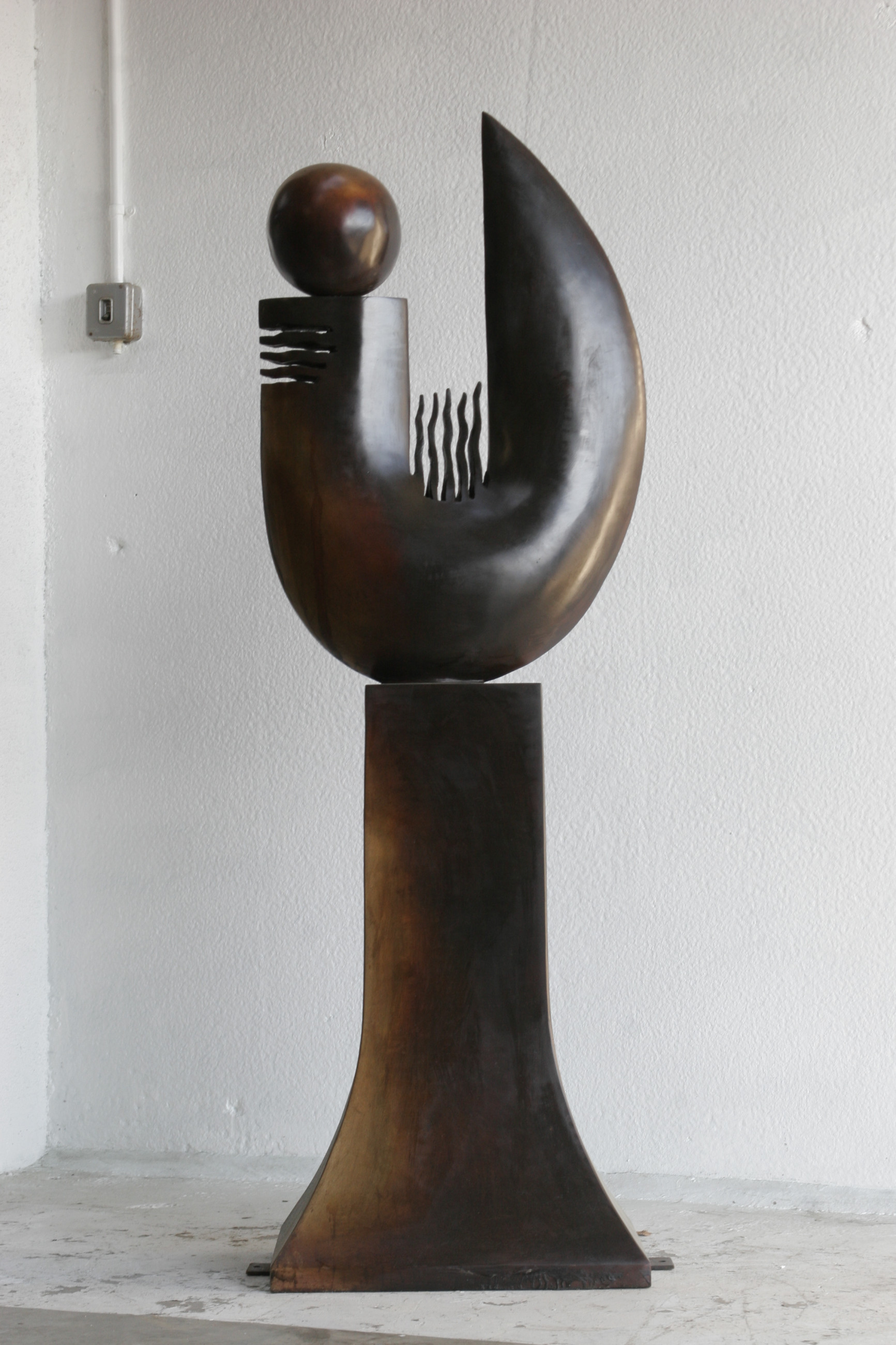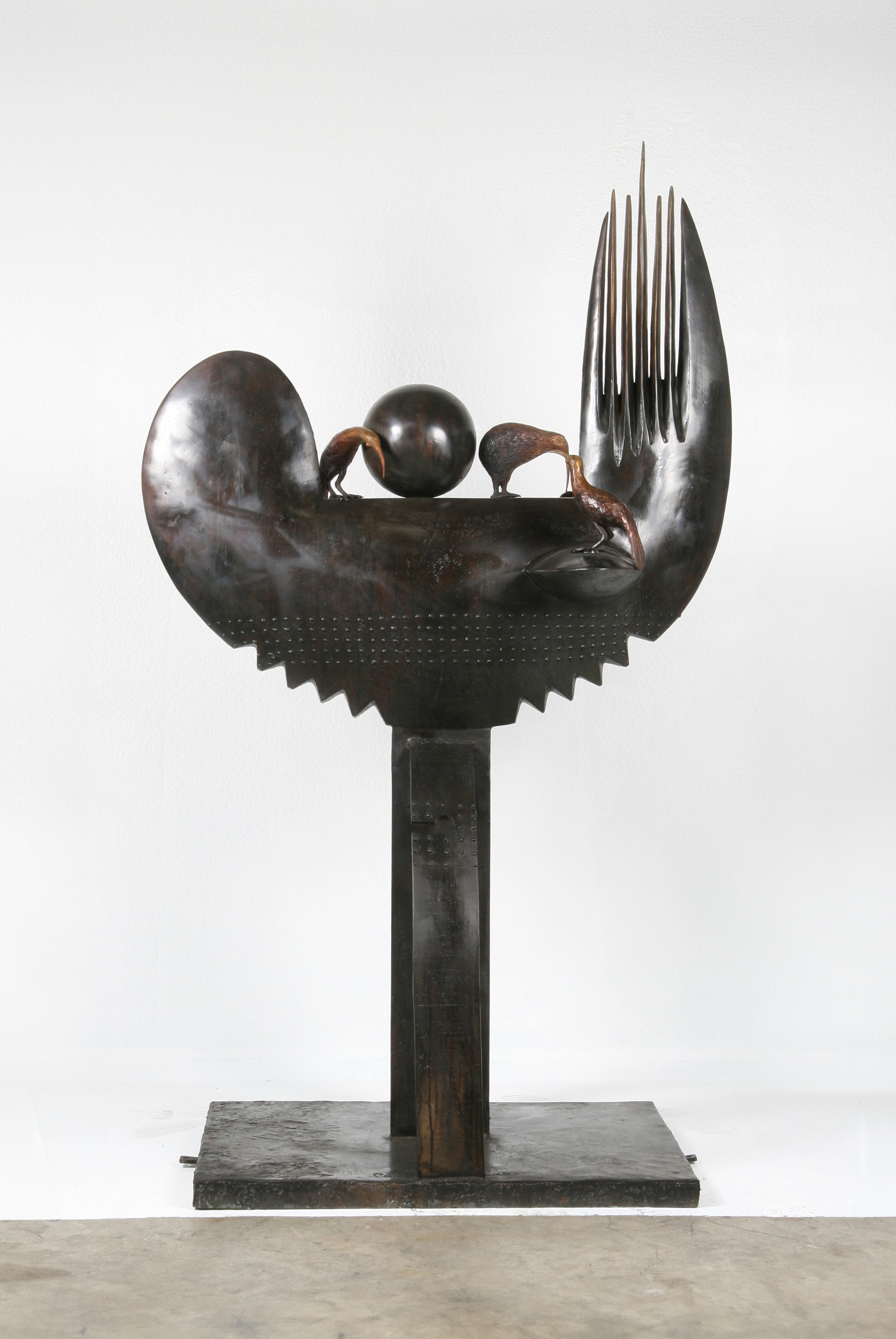September 27 - October 22, 2006 Paul Dibble Recent Bronze Sculpture
September 27 - October 22, 2006 Paul Dibble Recent Bronze SculptureSolo, Martin Browne Fine Arts, Sydney
Text
The comb studies emerged from the earlier Soft Geometric studies, but with the enlarged archaeological elements seen in works years previous also reasserting their presence. Cutting in harsh strokes through the forms or entwining upwards like tendrils—two strongly contrasting processes—they emerge as shapes that become prongs and teeth. The combs offer a wide identity, standing as a universal emblem of indigenous Oceanic culture; whether Kanak, Hawaiian, Cook Island, Samoan or any of the cultures dotted around the Pacific, including Māori.
Using the comb as an image retraces the path taken by modernist artists half a world away. Picasso with his collection of African masks, Gauguin and his Tahitian ladies, Whistler with his interest in the Japanese, each have been drawn to the ethnic. Dibble, with these simple grooming tools made in the Antipodes rather than a world away in Europe, relates to the ethnic images used by European artists but puts them in a new light.
Dibble’s annual trips to Pacific islands helped him in this research. In Vanuatu, the Cook Islands and New Caledonia he was drawn to the comb shapes. Always with an eye out for the negative shapes within forms, he found that the comb, with its strobe-like alternating positive and negative lines, provided new possibilities. When he produced his own in metal they were often made using brutal and expressive cuts into an otherwise smooth form, almost destructive in their necessity to achieve a rugged harmony.
